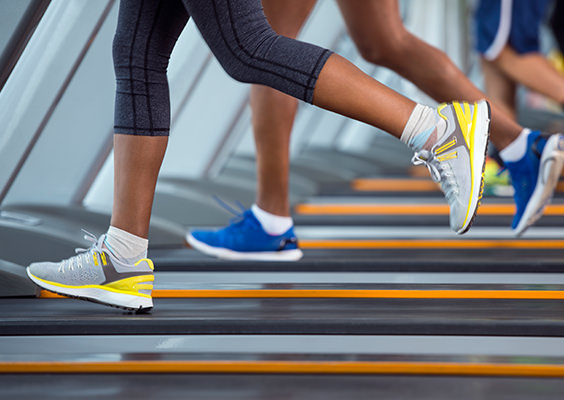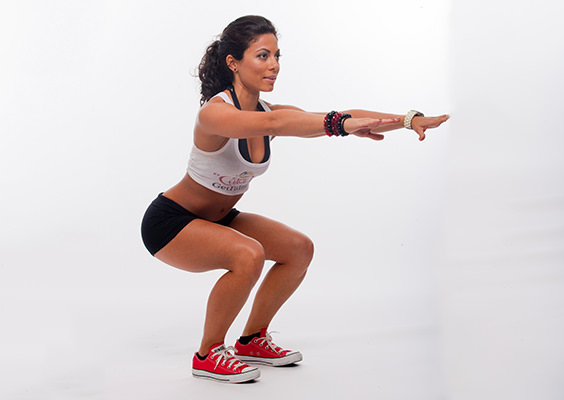If you’ve been following the advice of mainstream doctors or fitness “experts,” you’ve probably logged more than a few miles — and countless hours — on the treadmill.

I applaud your effort to be healthy. I know you’ve put in a lot of hard work.
But I have to tell you the truth…
They wasted your time.
That’s because the modern approach to “exercise” is completely wrong.
Our primal ancestors would scratch their heads at the modern notion of “exercise.” You’d never see them running in a straight line for hours on end, day after day.
How did our primal ancestors exercise?
They roamed the forests and plains looking for edible plants and berries. They dug roots with their bare hands. They crouched in wait to ambush and kill game. They sprinted after rabbits. They attacked large animals with knives and axes. They used their own muscles to take down wild beasts. And if wolves attacked, they ran like hell.
Our ancestors were constantly sprinting, lunging, jumping, twisting and turning. And by using their bodies as they were designed to be used they developed strong, lean physiques.
Cause Of Epidemics
Today very few of us have such physically demanding jobs. We spend most of our waking hours sitting. This sedentary lifestyle is a big cause of the epidemics we have today. It leads to obesity, poor physical fitness, depression, debility and other diseases.

And when we do exercise, most people stand in a gym and move one body part at a time. Or they jump on a cardio machine. But 30 minutes of the same repetitive motion doesn’t mimic at all any movement you need to do outside of a gym.
It’s not natural.
Sure, in the beginning your body has to adapt to this workout challenge. But over time
, if you don’t change what you’re doing, that adaptive response stops. You no longer get the benefit of the exertion.How To Get The Benefit Of Exertion
I have a different concept of “exercise.” To me it means a whole range of activities that provoke different adaptive responses. It also means working your body so it’s ready to meet the physical challenges you face every day… like squatting, lifting heavy objects, and carrying heavy things. I call it “functional movement.”
This way of exercising stresses natural movements and short, intense periods of exertion over long repetitive cardio routines. And it recognizes the importance of rest and recovery time.
We’re no longer part of a predator/prey society in which you either adapt or die. But our bodies still need to move as if we were.
How does PACE work?
I designed my PACE (Progressively Accelerating Cardiopulmonary Exertion) program as a functional workout. It creates real functional strength like our primal ancestors had. This isn’t the same as the unnatural strength weight lifters develop. They isolate and overwork muscle groups to the point where they can barely clap their hands over their heads!
How does PACE help you?
PACE helps you replace many of the challenges that civilization has taken away from us. And it builds the kind of functional strength you need for the fitness demands of real life. By that I mean things like mowing the lawn, climbing stairs, moving furniture, or getting your kids (or grand-kids) into the car.
One functional movement our primal ancestors depended on was squatting. They needed it to make a fire, gather wood, tend to children and more. But most Western people today have lost the strength and flexibility to squat.

That’s why I often have my patients start with an exercise called the Hindu Squat. You can do it right now in the comfort of your own home.
Here’s how:
- Stand with your feet shoulder-width apart.
- Extend your arms out in front of you, parallel to the ground with your hands open and palms facing down.
- Inhale and pull your hands straight back toward you as if you’re rowing.
- As you pull back, turn your wrists up and make a fist.
- At the end of the inhalation, your elbows should be behind you with both hands in a fist, palm side up.
- From this position, exhale, bend your knees and squat.
- Let your arms fall to your sides and touch the ground with the tips of your fingers.
- Continue exhaling and let your arms swing up as you stand back up to the starting position.

Do one repetition every four seconds. Once you are comfortable with the form, you can increase your speed to one squat per second. Repeat until you feel winded. Rest, recover and do two more sets.
If you want to learn some other good PACE exercises, go to my YouTube channel. I have more than 30 different exercises and a complete workout to help you get started.
To Your Good Health,
Al Sears, MD, CNS
